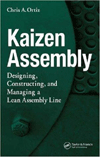
Located in Hinsdale, IL, Continental AutoSports sells, leases and finances new and used Farraris, Maseratis, Porsches, Bentley Azures and various race cars. Recently, the auto dealer needed to inspect the chassis quality of a rare 1962 Ferrari 250SWB, which was worth more than $1 million.
To help reduce fraud within the classic car industry, and in accordance with the Ferrari Classiche Certification Committee, vintage Ferraris go through an extensive inspection, including metallurgical tests. The committee requires the use of a Niton XRF analyzer to ensure originality of the chassis as part of the metallurgical testing.
XRF analyzers provide fast, nondestructive, qualitative and quantitative assessment of metals and alloys in a variety of materials.
Using Ferrari’s extensive historic archives, the committee evaluates the technical characteristics of each individual car put forward for certification. The technical examination of the car is the most important step in the process because it reveals whether the car is fully functioning, and whether its chassis, engine and components are original, or at least comply with the original specifications.
Skilled engineers at Continental AutoSports performed this technical examination on the 1962 Ferrari 250SWB in question with a Niton XLt 898D analyzer. Continental rented the advanced X-ray fluorescence analyzer from the Midwest branch of instrumentation specialist Ashtead Technology.
“The 898D allows us to ensure that these expensive and highly sought-after cars are exactly what they claim to be,” says Scott Wallace, technical services manager at Continental AutoSports. “The results of the evaluation play a key role in the certification process. So it is vital that we have the latest and most advanced instrumentation available.”
The 898D offers the speed and efficiency of X-ray tube excitation, as well as integrated touch-screen display with an advanced and intuitive user interface. Testing modes include standard signature store and match, chemical identification, and pass-fail sort.
The 898D’s analysis range is 22 standard alloying elements, from titanium to bismuth. As for data, the 898D stores up to 3,000 readings with X-ray spectra. The device also can display stored readings and recalculate stored spectra in other test modes at any time.
A handheld unit, the 898D weighs just 3 pounds and is fitted with two rechargeable lithium batteries.
“A major benefit of renting is that customers have access to the most up-to-date NDT instrumentation on the market, while avoiding the capital cost associated with buying outright,” says Dave Burnett, Ashtead Technology’s Midwest regional general manager.
For more information on XRF analyzers, call 800-242-3910 or visit www.ashtead-technology.com.





